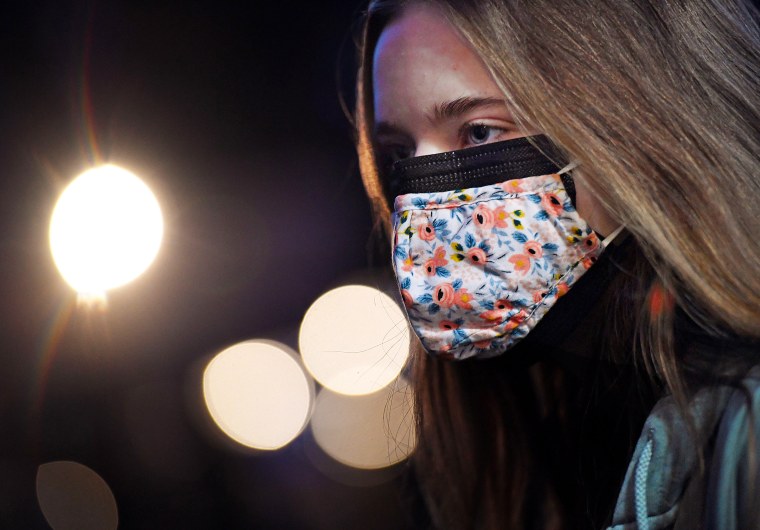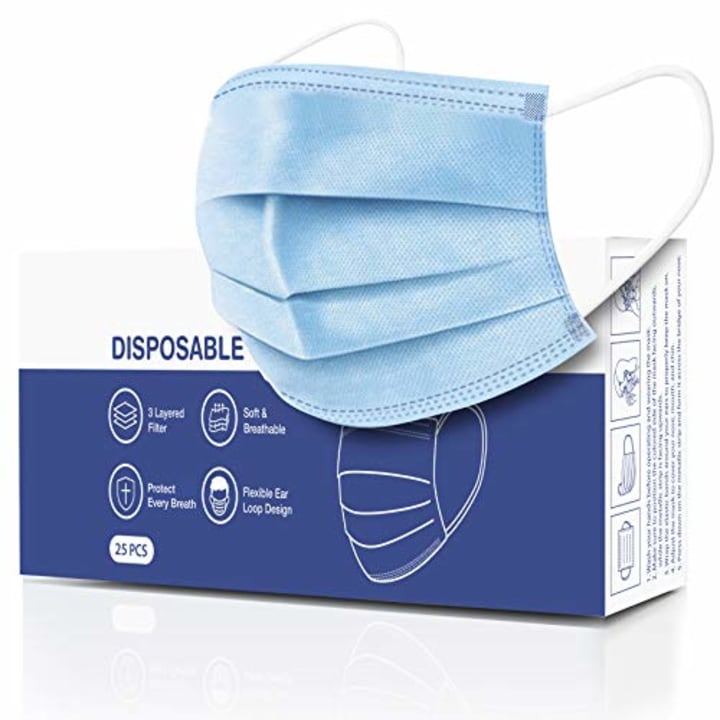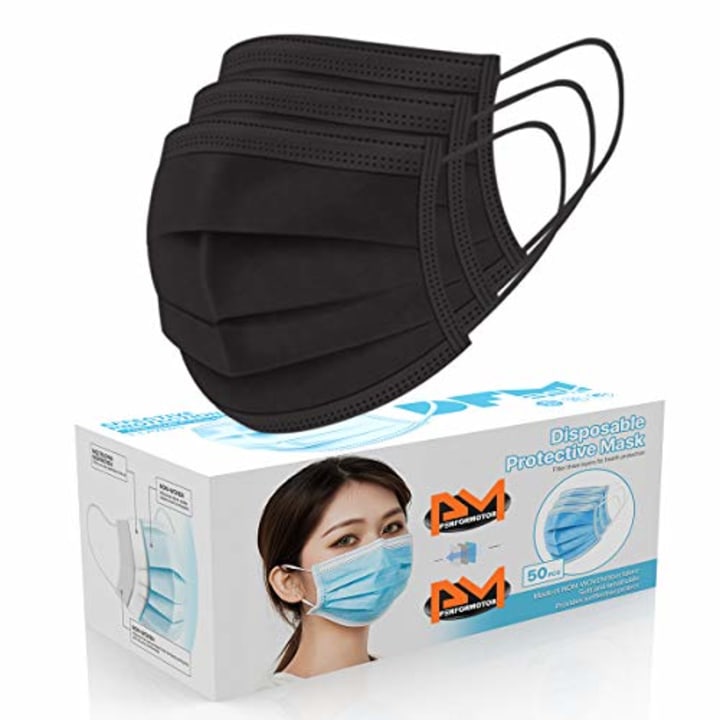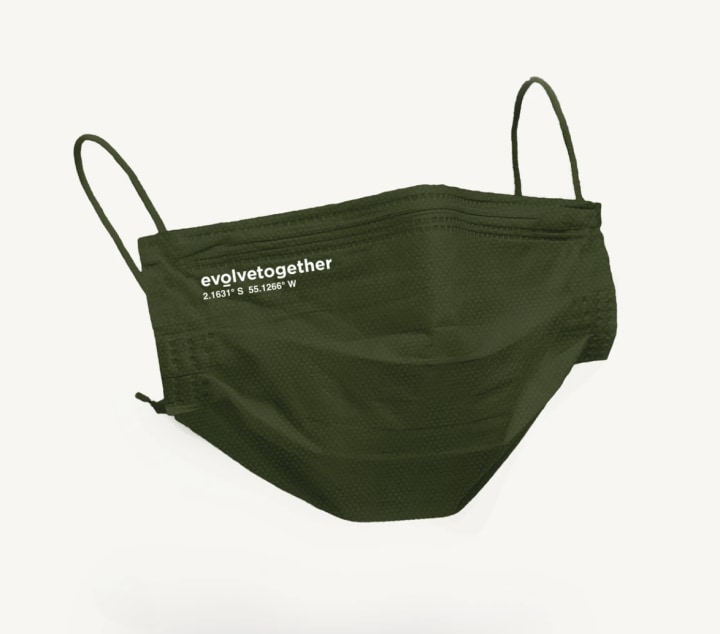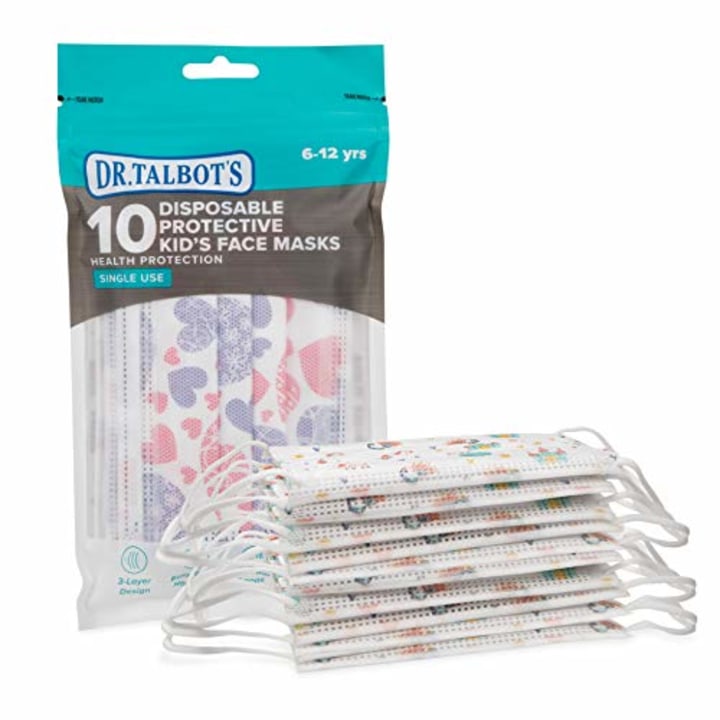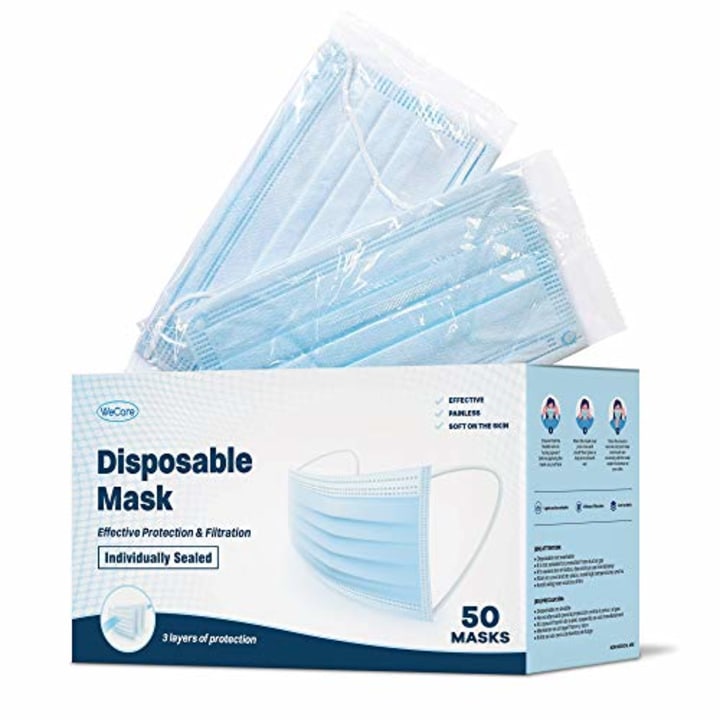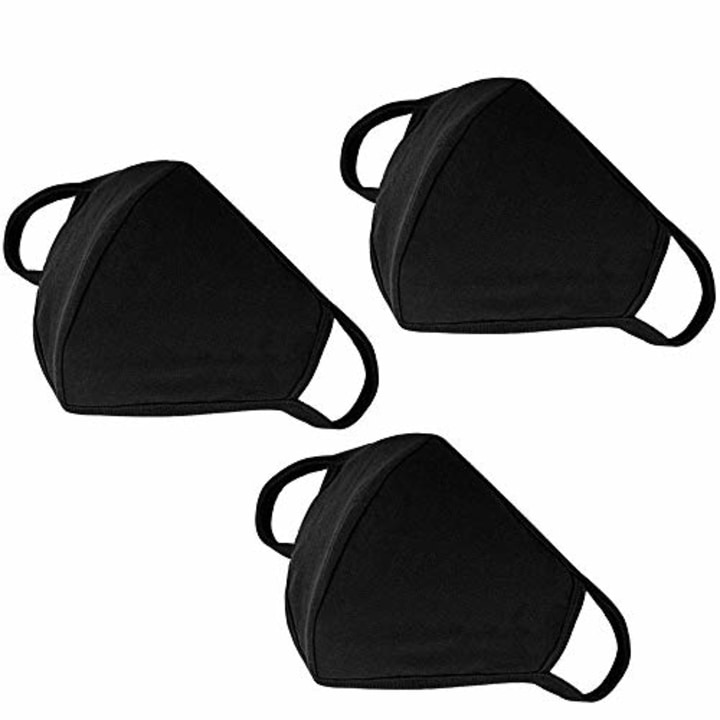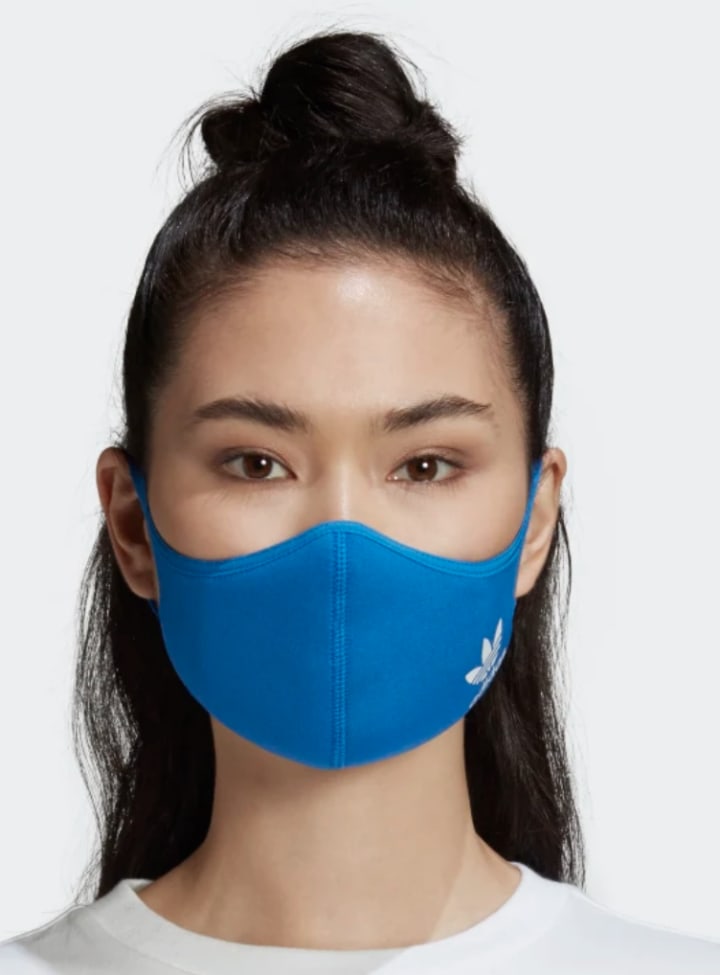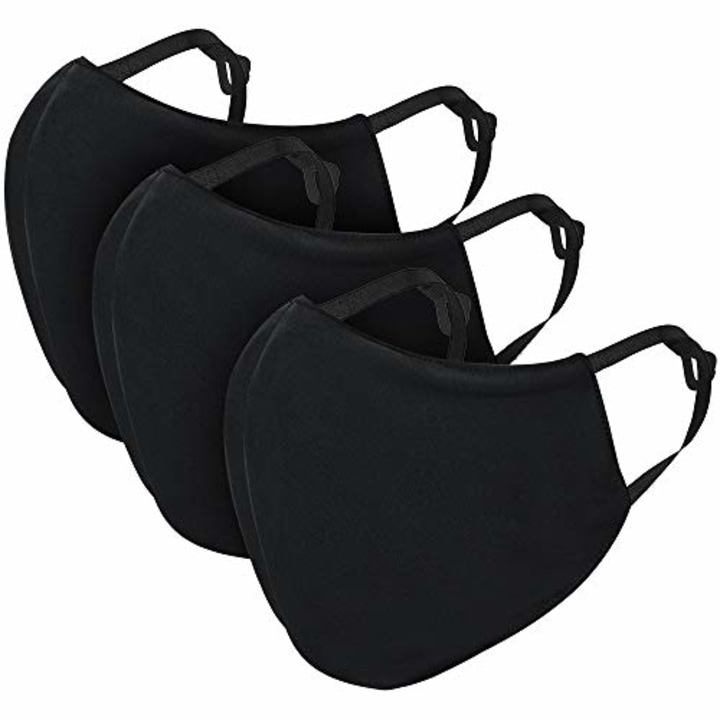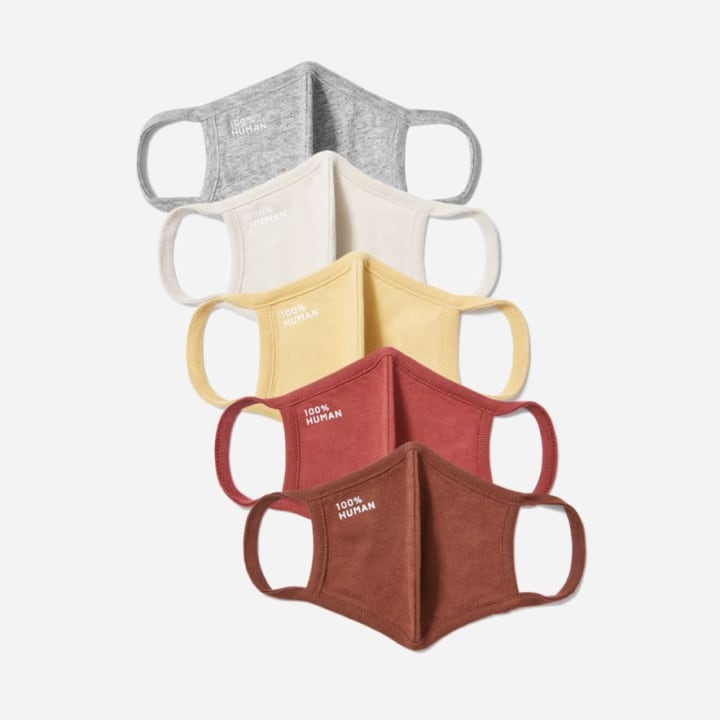Wearing two face masks, or double masking, can substantially reduce a person’s exposure to coronavirus particles, according to a new study by the Centers for Disease Control and Prevention. The CDC report is a first of its kind from the agency, specifically addressing mask-wearing techniques and their efficacies. The CDC ultimately recommends two ways to improve how well face masks can protect you:
- Double masking, or wearing a cloth mask atop a disposable surgical mask
- Or knotting-and-tucking the ear loops on a single surgical mask
When two people both exercise either of the above approaches, exposure to viral particles between them is reduced by upwards of 95 percent — more than double as efficient as the 42-to-44-percent efficiency the CDC saw from single surgical masks and single cloth masks.
SKIP AHEAD These face masks meet CDC criteria
As scientists and doctors identify new Covid-19 variants across the world and in the U.S., some Americans have been asking new questions about wearing face masks, notably whether they should double mask. In a recent interview with NBC’s “TODAY” show, Anthony Fauci, MD, director of the National Institute of Allergy and Infectious Diseases, said that when it comes to wearing two masks to protect against the coronavirus, it "makes common sense" that more than one layer of masking would be more effective. We consulted medical experts about double masking and how to approach doing so.
Why double mask?
On top of the CDC's new findings and subsequent guidance regarding double masks, interest in the practice had been steadily growing for some time. Jess Steier, DrPH, co-founder and CEO of healthcare data analytics company Vital Statistics Consulting, told us questions about double masking had been circulating lately given news about Covid-19 variants popping up across the world, including in the U.S. Andrea Love, PhD, a regional manager for Nexcelom Bioscience, added another potentially motivating factor for the interest: Although there is early evidence to suggest that the Covid-19 variants are more transmissible, it's still unclear how they will affect how the virus behaves. Love co-hosts the topical Unbiased Science Podcast with Steier.
While scientists and doctors don’t have exact answers yet, more highly transmissible variants may mean contracting the virus after shorter periods of exposure, for one thing. Thus, Love said the mitigation measures we take need to be more stringent, especially in regards to wearing face masks since they act as a “physical barrier to block these respiratory droplets.”
“Masks are not 100-percent effective, so you’re going to stop some droplets but not others,” explained Love. “If we’re trying to increase the number of droplets we block because the virus variants are more transmissible, that means we need better mask materials and more layers.”
More specifically, the CDC correlated different types of masks with efficiencies in blocking particles small enough to be considered “most important for transmitting SARS-CoV-2.”
- 42 percent of particles blocked: Unknotted surgical mask
- 44.3-percent of particles blocked: Cloth face mask
- 92.5-percent of particles blocked: Double mask
How to double mask
Double masking involves wearing two masks, one on top of the other. Some people opt for a medical-grade mask like an FDA-certified N95, KN95 or KF94 and layer a reusable cloth face mask on top of it. If you do use a disposable face, make sure to knot and tuck the mask for a tighter fit. By eliminating the gap where germs and other contaminants can slip in, a simple knot-and-tuck can reduce a person’s exposure to particles by 64.5 percent, the CDC reported. An easy way to see if the mask fits improperly is if cold breath comes out from the sides of the mask or if your glasses fog up.
If you don’t have access to a medical-grade mask, Love said you can also double up reusable cloth masks — the CDC recommends choosing fabric with two or more layers of tightly woven cotton, which is both machine-washable and breathable. “Overall, more layers is going to be better regardless,” Love noted, “because you’re providing a better physical barrier for these droplets.”
Should you double mask?
Overall, Love highlighted that “double masking is a very quick way” to ensure you have additional protection against the coronavirus.
“Transmissibility is of growing concern with the variants, so we absolutely suggest that folks double mask and insert a HEPA filter into reusable cloth masks for further protection,” Love noted. “It’s especially important if you’re indoors, in crowded spaces or in a place where mask adherence is low.”
Face masks: Back to basics
Beyond the type of mask you’re wearing, Steier said it’s crucial to wear masks correctly. “With all the new variants and mutations that are emerging, it’s not just that we’re masking. It’s the quality of masking that matters,” she noted. Amesh Adalja, MD, a senior scholar at the Johns Hopkins Center for Health Security, added that the general public needs to be more thoughtful about when they wear a face covering and what type of face covering they wear.
He advised ensuring the face mask fits tightly against your face in order to reduce gaps between the skin and mask. Steier added that you must wear your mask over your mouth and nose, too, not just your mouth. These precautions allow the face mask to “accomplish the function it’s designed to do: block respiratory droplets,” Adalja said.
With the above guidance in mind and if you’re looking to begin double masking, here are CDC guidance-aligned face masks to consider right now — both disposable and reusable.
Best disposable face masks
While experts don’t recommend the general public opt for medical-grade disposable face masks, there are plenty of non-medical grade options that check off CDC guidelines with multiple layers and other features. Here are some highly-rated options to consider.
CandyCare Disposable Face Masks
These disposable face masks feature three layers, including an outer layer made from non-woven fabric and center filtration layer. The masks also have a moldable metal nose clip as well as flexible elastic ear loops. They’re available in packs of 24, 500, 1,000 and 2,000.
PM Performotor Disposable Face Mask
Available in seven colors like Black, White, Purple and Green, these disposable face masks are made from three layers of non-woven fabric. They feature an adjustable nose clip and elastic ear loops. The masks come in a pack of 50.
Evolvetogether Amazonia Face Mask
Evolvetogether’s green face mask consists of three layers, including a non-woven, water-resistant outer layer and a water-absorbent, skin friendly inner layer. The masks come in a pack of seven, have an adjustable nose bridge and soft ear loops. A sustainable mask keeper for on-the-go storage is included with the masks, too. Additionally, with each purchase of this face mask, shoppers can donate $1 — the cost to plant a tree — to One Tree Planted, a nonprofit focusing on ending deforestation and global warming.
Dr. Talbot's Disposable Kid’s Face Mask
Dr. Talbot’s disposable kid’s face masks are made from three layers of fabric, have an adjustable nose clip and feature reinforced ear loops to help keep them from breaking. The masks also come in a variety of patterns and colors, like rainbows, flowers and hearts, and they’re sold in packs of 10.
WeCare Disposable Face Mask
WeCare sells individually wrapped disposable face masks in a wide range of colors and patterns from Tie Dye to Leopard Print and Camo. Masks come individually sealed so you can throw them in your purse, backpack or even stash in your pocket without getting them dirty. The masks are made from three layers of fabric and feature an adjustable nose bridge.
Best reusable face masks
Reusable face masks are generally more comfortable than disposable masks but also require more care and regular cleaning. Here are some highly-rated options to consider.
Yiiza Reusable Cotton Face Mask
These Black reusable face masks are made from three layers of cotton. They have an adjustable nose bridge to customize the mask fit, which helps keep glasses from fogging up, too. The masks are machine-washable and are sold in a pack of three.
Adidas Face Covers
A Shopping reader favorite, Adidas’ face mask is made from 40-percent recycled materials and comes in two sizes: XS/S and M/L. The mask is dual-layered, machine-washable and comes in a pack of three. Due to its breathability and high quality polyester fabric, Adidas masks are a solid option to wear while exercising.
Maxboost Fabric Face Mask
These reusable face masks come in three sizes: Kids, Unisex M/L and XL. Masks are made from two layers of fabric and have adjustable ear loops, as well as a nose bridge wire. They are machine-washable and feature a 3D curved design to leave space between the mouth and mask and make breathing easier. Masks are sold as a three or six pack.
Everlane The 100% Human Face Mask 5-Pack
Everlane’s one-size-fits-most face masks come in packs of five. They are designed with double-layered woven fabric and feature elastic stretchy ear loops. The face masks come in four styles: Pastel Tie-Dye, Grey/Black, Neutral Tie-Dye and Assorted Colors.
Catch up on Select's in-depth coverage of personal finance, tech and tools, wellness and more, and follow us on Facebook, Instagram and Twitter to stay up to date.
